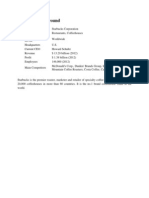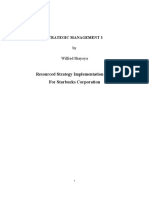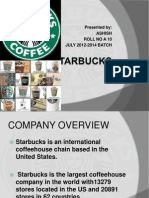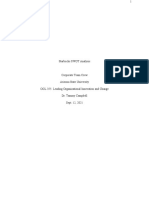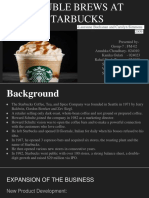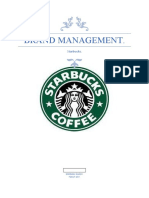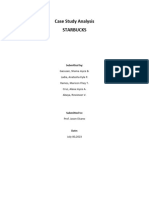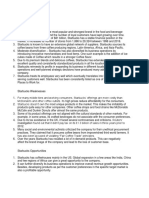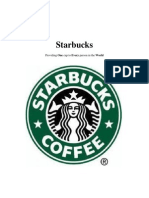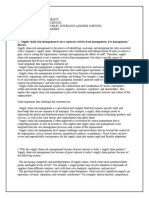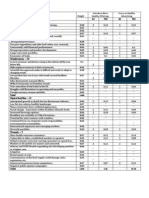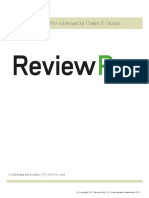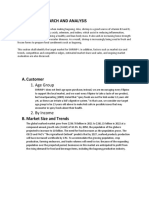50% found this document useful (2 votes)
5K views12 pagesStarbucks SWOT & Strategy Analysis
Starbucks has a comprehensive corporate strategy that includes competitive, functional, and market expansion strategies. Their differentiation strategy focuses on providing an elevated coffee experience through training, unique products, and store atmosphere. Their cost leadership strategy allows them to obtain quality ingredients at lower prices. Starbucks' core competencies are extensive research and development of their coffee blending and roasting processes. Their strategies also include global store growth, innovative product lines, employee training, and new sales channels like mail order and partnerships. While successful, Starbucks faces threats from competitors and economic downturns that could weaken their brand if quality and customer experience are compromised during periods of growth. Franchising could boost growth but risk reducing Starbucks' control over operations and consistency of customer experiences
Uploaded by
rahulindoCopyright
© Attribution Non-Commercial (BY-NC)
We take content rights seriously. If you suspect this is your content, claim it here.
Available Formats
Download as DOCX, PDF, TXT or read online on Scribd
50% found this document useful (2 votes)
5K views12 pagesStarbucks SWOT & Strategy Analysis
Starbucks has a comprehensive corporate strategy that includes competitive, functional, and market expansion strategies. Their differentiation strategy focuses on providing an elevated coffee experience through training, unique products, and store atmosphere. Their cost leadership strategy allows them to obtain quality ingredients at lower prices. Starbucks' core competencies are extensive research and development of their coffee blending and roasting processes. Their strategies also include global store growth, innovative product lines, employee training, and new sales channels like mail order and partnerships. While successful, Starbucks faces threats from competitors and economic downturns that could weaken their brand if quality and customer experience are compromised during periods of growth. Franchising could boost growth but risk reducing Starbucks' control over operations and consistency of customer experiences
Uploaded by
rahulindoCopyright
© Attribution Non-Commercial (BY-NC)
We take content rights seriously. If you suspect this is your content, claim it here.
Available Formats
Download as DOCX, PDF, TXT or read online on Scribd
/ 12



